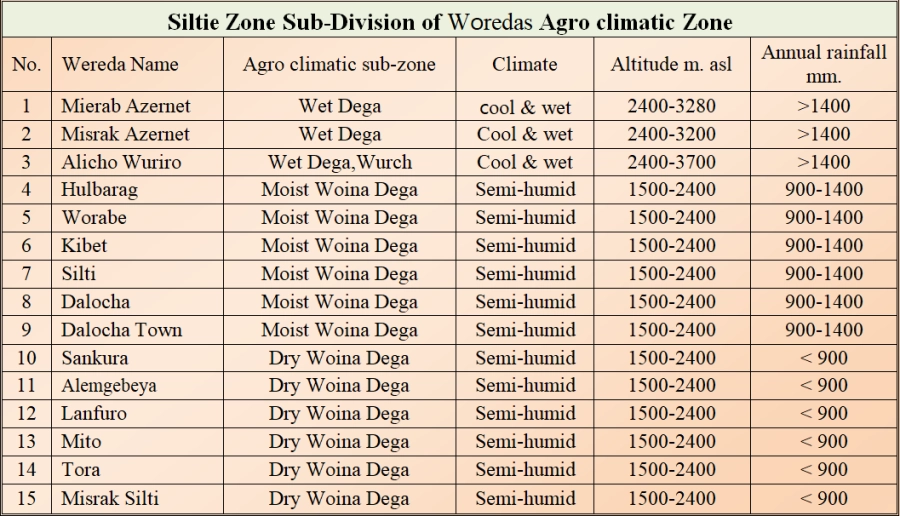The Silte zone is classified as one of the central zones, and its geographical location is mostly plains, while the rest is covered with natural and man-made forests, and has a mountainous and hilly landscape. The total land area of the zone is 2700.04 sq. km. The altitude of the Silte zone is 1500-3700 meters above sea level and the climate covers 37% of the highlands and the remaining 63% is subtropical. The annual temperature ranges from 12-26 degrees Celsius and the annual rainfall ranges from 780-1818 mm.

The zone is made up of 10 districts and 5 city administrations. Werabe, the capital of the zone, is 160 km away from Hawasa, the capital of the region, on the main road that runs from Addis Ababa to South Omo on 173. The zone is bordered by Halaba zone in the southwest, Gurage zone in the north and northwest, Oromia region in the east, and Hadiya zone in the southwest. Werabe, the capital of the zone, is located 173 km southwest of Addis Ababa. The administrative structure is divided into 10 districts and 5 city administrations. The total population of the zone is estimated to exceed 1,280,222 in 2018/19 based on the 1997 census. There are 01 university, 07 colleges, 13 preparatory schools, 24 secondary schools, 85 comprehensive schools, and 230 primary schools in the zone. A total of 237,614 students are enrolled in these schools.
The Silte Zone has a total area of 2700.04 square kilometers, of which 198587.05 is used for agriculture (165027.27 is covered by annual crops and 33557.5 by permanent crops); 8319 is cultivable; 4759.17 is uncultivable; 10646.67 is used for grazing; 29187.47 is forest and shrubland; 8832.84 is water and wetlands; and the remaining 12423.72 is covered by other miscellaneous land uses. The administrative structure is divided into 10 districts and 5 city administrations (Dalocha; Hulbarag; Silti; East Silti; Lanfuro; Mito; Alicho-Wriro; Sankura; West Azernet Berbere; East Azernet Berbere districts and Warabe; Kebet; Tora; Alem Market and Dalocha city administrations). The zone is also organized into 36 urban kebeles and 200 rural kebeles.